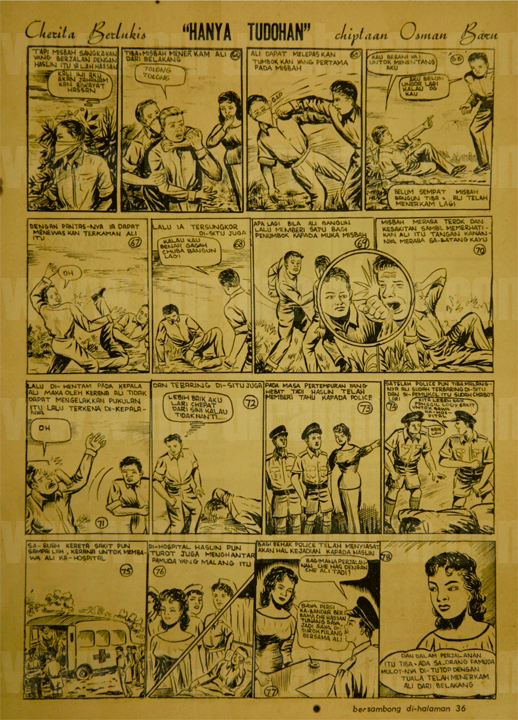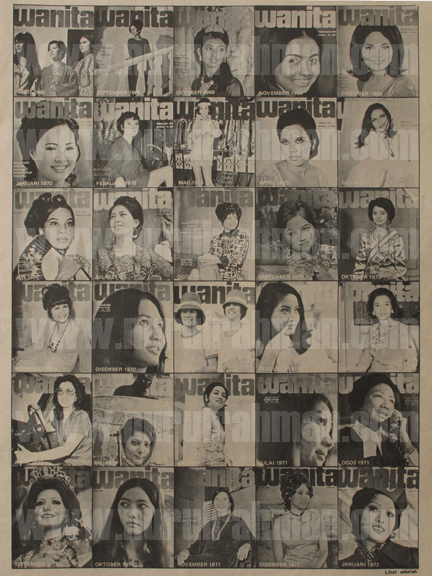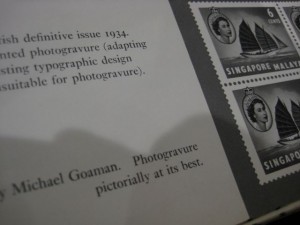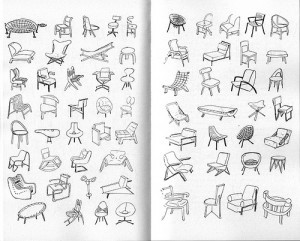Found this comic page in Majallah Filem a malay movies news published November 1961.
W A N I T A
Thanks to my mother’s collections of WANITA, Malaysian most popular and oldest women magazine, I am able to conduct this PhD research based on WANITA magazine. WANITA stands for women in Malay language, first published in August 1969 by Utusan Group Malaysia Berhad for women in Malaysia, in Malay language. Nowadays WANTA are competed with many other Malaysia malay language popular women magazines such as Majalah Mingguan Wanita (womens weekly), UMI (mother), NONA (young lady) and many more.
For me personally, it interesting to be able to read not only the cover’s layout, style, images, typo but also the discussions in the content of the magazine. Some of the articles provides the missing piece of puzzle that we all might try to complete. I guess many Malaysian have faced these issues, each one of us carry puzzles and constantly search for the missing pieces of the puzzles. My missing puzzle are found through the old print media. Reading these old prints informed my practices. It is not only the modern glamorous products that contributes to the practices but also the older version because it shows the history of it. These artifacts are my precious, because it hold the key that will allow me to unlock the time tunnel to visit the past lifestyle of many Malaysian. Unfortunately not many of us gets to hold this key, mainly because this key are not available in many officials institutions. They are lost, perhaps in boxes, hidden in warehouse, kept in some safe hands of personal collectors or secondhand book shops. But without them, we are lost and confuse. History informed and shaped the future. Constructed history will shaped constructed future. We need resources, the more the better so we could choose, weight and follow the future we want to be in.
Look at the past Malaysian women… beautiful, modern and intelligent!
Malayan Postage Stamp
I found this Singapore/Malaya stamp in one of Penrose Annual publication in 1957. Isn’t it interesting. Makes me wonder how many new generation in Malaysia knows this stamp. Yet I found this stamp published in a book that has been published nearly 41 years in United Kingdom. In this articles the discussion is about the photogravure technique and process. Apparently it was the lastest printing technique at that time. There are others sample and discussion in these book, which I intend to upload soon.
Inspired By Munari
New Malaysian are we?
Recently there is an issues about immigrants in Malaysia. I overheard conversations in a coffee shop while having my Teh Tarik, a discussion about immigrants from neighboring country occupying various main city in Malaysia, and the main one is Kuala Lumpur. From the conversation I can sense there is unpleasant feelings toward the flood of immigrants coming to Malaysia. One of the reasons are based on the public tax fund, that was use to build the public transport. The fact that the public transport like LRT, Monorails and buses around Kuala Lumpur are now mostly been occupied by non-Malaysian. I kept my ears wide open for the next argument. One person said it is annoying to take public transport now days, because we have to share and squeeze in with the new immigrants. Asked by his friends how did he found out about this, the way I heard the conversation, the other man apparently have a skill to identify and distinguish between local and immigrants, and therefore, he knows that mainly the passengers that occupied the public transports are immigrant. Then his friend add by saying that its unfair that we have to share our public transports facilities with the immigrants, because he feels that public transport in Malaysia was meant and created only for Malaysian. He disagree the fact that the immigrants are allowed to take the public transport.
I continue listening to their conversation, expressing their feelings about their developing country and of course the discussion also covers comparing the past and now. That things have change and life is now different then before. My thoughts, yes of course, luckily, otherwise they will still be leaving in the past, and nothing is progressing. Their discussions continue and touch on topics such as immigrant’s fashion, their behaviors, and languages that they speak. It is clear to me that these immigrants they have in mind, are not the professional expatriates , instead they are the skill workers, like building contractors or mostly known as cheap labor. The one that helps many big constructions company complete their bilions $ projects. The one that is willing to gamble their life taking on a job walking along highways sweeping the Malaysian roadsides from rubbish that been throwed out from the car by many unethical Malaysian. Yes, these are the people that they were annoyed with. The discussion continue on ranting about how their tax are used to full fill the needs of the immigrants and similar things until they decided to leave the mamak place. Each one of them walk towards their car parked at the LRT station’s carpark and drive away.
Now, that conversation makes me think. First, why bother feeling annoyed about the immigrants occupying the LRT, buses or other public transports when they are not interested to use it? Most of the time when I was in Kuala Lumpur, I have mainly traveled with public transports, and yes, there might be plenty of immigrants occupying the train, but what is the problem here? They are human, may be we’re not from the same country or cultural practices, but they don’t seems dangerous to me, in fact I have witnessed several times where most of them have been kindhearted. An old lady was given a sit by an Indonesian man, and an Bangladesh man assisted a blind man from the LRT to the KL Sentral exit. Now, when it comes to behaviors, I blame the local. See, when people migrated to another country, first few things that they do is to observed the kind of lifestyles and behaviors the society they’re living in. Only in some very rare cases that the immigrants strongly portrayed their cultural or country origin. At least not in first few months. They might kept their way of dressing, but to be able to blend into the ‘new society’, they need to be able to understand how this society works. One would ask what is it for? May be some would be in other people’s country to make problem, this kind of people are everywhere, they make problems anyway. But what about the one who migrated for their future life? They not here on sponsored advertiesments about their country, they are here only for one reason. To try their luck in another country. To seek for better life and future for their children.These people are here to work, and shouldn’t Malaysian be happy that this phenomenon will encourage business and skills ? That it will also generate fluxs of culture between both, local and immigrans. That there are lots of things to learn about the new people in the country? And that they should not be treated badly and downgraded?
The way I see it, what we seeing today in Kuala Lumpur is the reflections of the Malaysian society. Being selfish and arrogant will not help to nurture the relationship between the immigrant and the local. Hatred will not lead us anywhere. Sharing and showing that we love the facilities that was created for all, is one way to facilitates and encourages new immigrants to understand us as Malaysian. If we make fun of their way of dressing, then we should start looking at ourself in the mirror. The new immigrants is our reflection, so what ever we think about the new immigrants, it is a reflections of our new nation. Remember, one need to be able to look at oneself at the mirror before start pointing fingers at other.
Space of comfort
I wanted to post this long time ago, but I completely forgot about it. We move to the new space, new building in September. Building 9, on Bowen Lane. We have to share this space with other postgraduate student from other media and communication discipline (which is great! We use to only talk to ourselves because all we got around us is the MCD people). MCD studio stand for Media Communication Design, ‘the designers’ and not the others. Anyway, back to the new space, yes nice space, newly designed, nice try thoght on saving the energy on sensor based light (which after a while can be annoying, because some sensor is not working so you have to walk around to the sensor that is working to relight the room). The reason I started to take photos of my desk is to document how I use, organise, mess-up and left over my space while I am working on my PhD. The desk is a space for me to explore, get inspired, cut, glue, paste, stamp, of yes the most important is to write. I can work from home, however the space, computer screen, size of the table and the post notes that I stick around me on the cubical imaginary wall brings me comfort. I also have blanket under my table, because the air-conditioning in this space can be super cold.
Now, as I get more confortable with the space, the artifacts around it grows, sticky notes, papers, books, wall is full of important skecthes over one another. I’ll post on another image later on. Oh! By the way, Happy Easter! Happy choc eggs hunting! (for me).
100% India
Style IV
Back to the step A.
Collecting materials that I felt could help me in finding concept for my visual book. To record this process I took photos of them, and here are the materials. It is an on going process at the moment, so I will constantly upload the materials in my blog.
Found this a while ago when I was on my short break trip of three weeks. Got it in my laptops but only have a chance to have a look at it now. Files of the life style is the name of the column I found in the magazine provided by SNCF, a French TGV train company when we were on the way from Reims to the Chales De Gaule airport. I like the style, the mixture between the cut-photo and a hand sketches (Style I, II, and III). Thought I might be able to look at it when I begin to create my concept for the visual book.
The style IV is more toward an idea that I could look at in representing my collection as in exhibition. I like the way the artist use of light and shadows, in projecting the images. It also attract me the way the artist construct the object in a circle, and animated them like the merry go round. I did not have a chance to visit the exhibition but only through thi
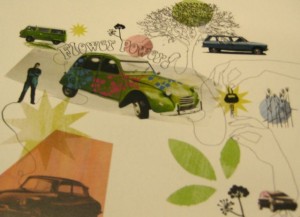
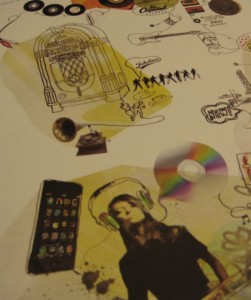
Collecting materials that I felt could help me in finding concept for my visual book. To record this process I took photos of them,
and here are the materials. It is an on going process at the moment,
so I will constantly upload the materials in my blog.
Found this a while ago when I was on my short break trip of three weeks. Got it in my laptops but only have a chance to have a look at it now. Files of the life style is the name of the column I found in the magazine provided by SNCF,
a French TGV train company when we were on the way from Reims to the Chales De Gaule airport. I like the style, the mixture between the cut-photo and a hand sketches (Style I, II, and III). Thought I might be able to look at it when I begin to create my concept for the visual book.
The style IV is more toward an idea that I could look at in representing my collection as in exhibition. I like the way the artist use of light and shadows, in projecting the images. It also attract me the way the artist construct the object in a circle, and animated them like the merry go round. I did not have a chance to visit the exhibition but only through this images from the magazine in the train I can sense the intimation, the closeness feeling towards the exhibition object. I felt connected.


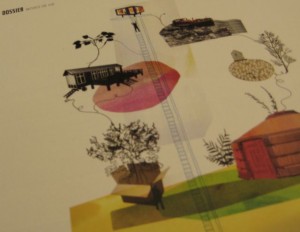
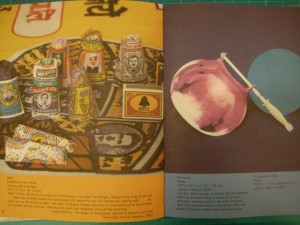
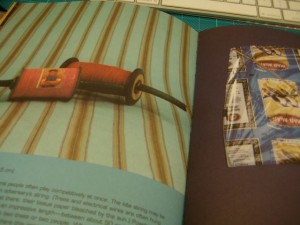
Found this book when I was in book shop of the building where the library and museums are in the center of Mont Pompidou, Paris. Luckily it is published in English. This book was a display book so the condition is not at it best,
but the first time I set my eyes on this book,
I knew it had travel with me to Melbourne.
100% India is book a work done by Catherine Geel, a design critics and curator, together with Catherine Levy, a designer. Published Cronicles Book, California 2004. Both worked on a cultural project between India and France, and their interest is in ephameral products and print in India, and through this book both of them have captured the product and discuss about its contribution in the developing India, economically, and socially. I think this book is the closes to the idea I have in my mind of how I want to present my work.
Dossier: Mode de vie
What I am trying to project here is the
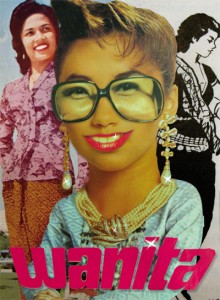
Title: Wanita,
Constructed! 2010
Back to the step A.
Collecting materials that I felt could help me in finding concept for my visual book. To record this process I took photos of them,
and here are the materials. It is an on going process at the moment, so I will constantly upload the materials in my blog.
Found this a while ago when I was on my short break trip of three weeks. Got it in my laptops but only have a chance to have a look at it now. Files of the life style is the name of the column I found in the magazine provided by SNCF, a French TGV train company when we were on the way from Reims to the Chales De Gaule airport. I like the style, the mixture between the cut-photo and a hand sketches (Style I, II, and III). Thought I might be able to look at it when I begin to create my concept for the visual book.
The style IV is more toward an idea that I could look at in representing my collection as in exhibition. I like the way the artist use of light and shadows, in projecting the images. It also attract me the way the artist construct the object in a circle, and animated them like the merry go round. I did not have a chance to visit the exhibition but only through this images from the magazine in the train I can sense the intimation, the closeness feeling towards the exhibition object. I felt connected.
Apologies for the quality of the images, I took it with my compact digital camera on a moving TGV train.



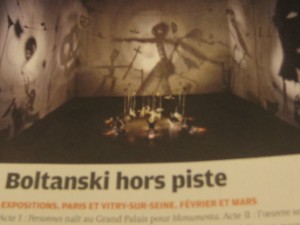
Just a try out
Title: Wanita, Constructed!
When I posted this image manipulation or collage piece of work two days ago, I thought this was the style I wanted to adopt in presenting my work. In the process of exploration and finding the right concepts I have this idea of collage playing in my mind. I am not sure if this can be considered as a way to visualise my argument but I was engaged and eagered to produce this piece. I was playing around with images and thought if it can be a way to produce the images, and highlight my point. But now as it is ready, I don’t feel right. I don’t think this is the direction I want to take. The reason behind it is, I think I got distracted. What I wanted to do here is to find a way or concept to represent or highlight what I am arguing by showing how. The idea is to take the readers in a journey and ongoing journey of five decades in Malaysia. With this piece it is not a journey, instead it is more of making a statement, which is not really the path I want to take. Not in this way. My idea is to make the reader think about what is there and start a discussion, not by providing the reader with statements. I will keep this piece and perhaps it will be useful for another project.
* Collage images are taken from wanita’s magazine cover dated from 1970’s, 1980 and 1990’s (artist own collection)
Ideas, ideas, ideas..
Ideas.. what else.. I am tangle with different concepts, and it’s hard to choose which just one. It makes me wonder is there a ways to analyze ideas and methods to see which one is appropriate? One of the steps that I have been practicing, is step A) collecting ideas that influence the brain storming process, usually I take photos of what inspired me, and then I display them around my working space, display in this context means printing them on a paper and stick them around. Because what influences me can be almost anything, therefore the collection material can also be anything. Text, photos, shape, pattern, people’s reaction, comments, sketches (not that I can sketch well) and almost anything. So, usually I will collect them, and sometime, well, most of the time, these materials that I collected are not relevant. After step A complete, or I am satisfied with the material I have and think that it is enough (even though it never been), then comes step B) I need to stop and to focus. To focus means to look back at the purpose of doing this project, and highlight the issues that I want to address. By this time, my heads is filled up to the full tank, and I already have plenty of distractions, with lots of ideas what I can do with my collections, but none of them is relevant to what I am suppose to do. Focus, focus, focus.. and that’s what I need to do.
Now, this might sounds easy, but not when I am in the process of making. It’s quite difficult. Not because I did not follow the steps that I just list out above, but I think it’s because I am dealing with feeling, what is my like and dislike, preferable and non preferable, therefore, most of the time to cut it short, I am dealing with what look will satisfied me most. And furthermore, even the rational is there, at the end of the day, I still have to deal with this feeling. This is the process I am at. I think at this time I need to get back to step A.
Here’s an idea: interesting way to present Melbourne, another angle with the helps of lots of print collection.
Victoria State Library held an interesting exhibition that portray social and historical view of Melbourne through shopping activities. Not only the exhibition traces the historical parts or should I say the roots of the passion of shopping activities in Melbourne but also it provide juxtapose of Melbourne through the past and present. Graphic ephemeral such as poster, brochure, tickets etc. are among the collections items along with object, maps, photographs and video shows, that there to demonstrate the period of time she shopping facade, activities and scene took place. It gives me some ideas of how I can conduct my exhibition later on.

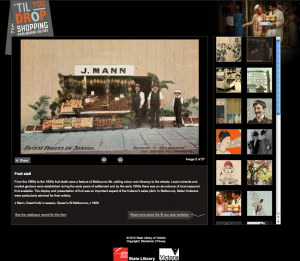
For more info of Shop Till You Drop, Melbourne visit the link.
To be continue..

